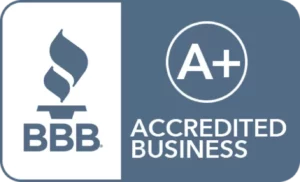Self-Directed IRA Contribution Limits
The Self-Directed IRA Maximum Contribution for 2023 is $6,500 if you’re under the age of 50. If you’re at least age 50, you receive an additional $1,000 catch-up contribution, which sets the maximum contribution at $7,500.
There is no income limit to establish a Self-Directed IRA.
The Self-Directed IRA LLC maximum contribution limits increased $500 compared to the 2022 limits.
IRA Contributions
An IRA contribution is the money that you, the IRA holder, puts into the individual retirement account. The two most common IRAs to invest in are the traditional IRA and Roth IRA, but you can contribute money to any type of IRA. As you may know, contributions create a nest egg until you reach the age of retirement.
When you make a Self-Directed IRA contribution, you must make it to the IRA administrator/custodian, such as IRA Financial Trust. Contributions cannot go directly to your LLC. However, when it goes to the custodian, the funds then transfer into your IRA LLC.
Why do the Maximum Contributions Exist?
The IRS (Internal Revenue Service) have kept the IRA contributions low to limit the amount of deductions an individual can take on his/her tax return. The IRS want to limit how much you can save for retirement each year. It may sound strange, but the IRS does not want to you leave the funds in your retirement account to build an inheritance.
Providing Less than the LLC Maximum Contribution
You can provide less than the Self-Directed IRA LLC maximum contribution. In fact, you do not have to make yearly contributions to your IRA if you do not wish to do so. However, you cannot make up the difference in the following year. While you can make lower contributions than the Self-Directed IRA maximum contribution, you cannot exceed the maximum contribution.
Roth IRA Maximum Contributions
Roth IRA limits for 2023 are the same as a traditional IRA. Again, the total amount that you can contribute is $6,500. If you are at least age 50, you can contribute up to $7,500. Income limit restrictions have also increased.
If you’re a single filer, your income limit starts at $138,000 and ends at $153,000. If you are a married filer, or qualifying widow, the income limit starts at $218,000 and ends at $228,000.
If you are below the income restrictions, you can fully contribute to a Roth IRA. If you are above them, you cannot directly contribute at all. If you are somewhere in between, you are limited in the amount you may contribute.
When One Spouse Earns Income
You can establish a Self-Directed IRA (SDIRA) or IRA LLC if only one spouse earns income that year. Simply file a joint return and you and your spouse can both make IRA contributions.
The amount of your combined contributions must not be greater than the taxable compensation on your joint return. Additionally, the combined amount cannot exceed the maximum IRA contributions for the year. It doesn’t matter which spouse earns the compensation.
Contributing When Covered by a Work Retirement Plan
If you participate in an employer-sponsored retirement plan, such as a 401(k) or SIMPLE IRA plan, you can still make Self-Directed IRA contributions. However, if your employment retirement plan sponsors both you and your spouse, and your income exceeds certain levels, you may not be able to deduct the full contribution.











